Hello. My name is Shibata, who will be a sightseeing correspondent in Chuo-ku from this April.
Today, I would like to introduce "Chuo-ku from the top of the river"!
This time, during the photo session of "Kanda River Cruise Photo Session & Review Meeting 2018", which was held on April 21 at Aiei Gallery in Nihonbashikodenmacho, going with Professor Takahiro Ohara while enjoying the nature and culture of the city, I was on a cruise around Nihonbashi River, Kanda River, and Sumida River.
I would like to introduce the scenery of Chuo-ku (including on the boundary) from the photos I took on the day.
The route is like the map below. (I'm sorry for the miscellaneous map...)
It is a counterclockwise route that goes up the Nihonbashi River, goes down the Kanda River and the Sumida River, and goes up the Nihonbashi River again.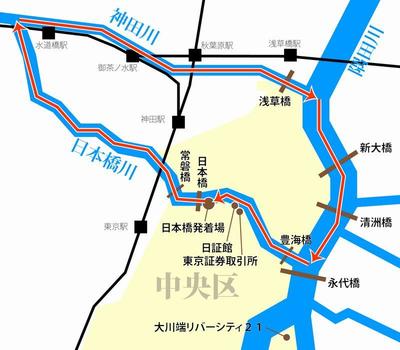
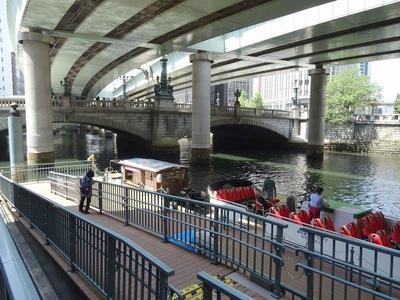
The start/goal of this event is the Nihonbashi Departure and Departure located near the Nomura Securities Headquarters under the Nabashi and Nihonbashi.
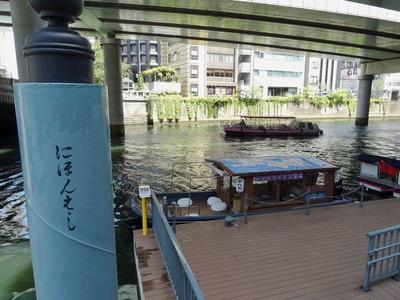
This time, I got on the boat "Shitamachi Exploration Cruise Gareon" with a parlor here.
Goldfish is drawn on the roof, but some of them were genuine goldfish.
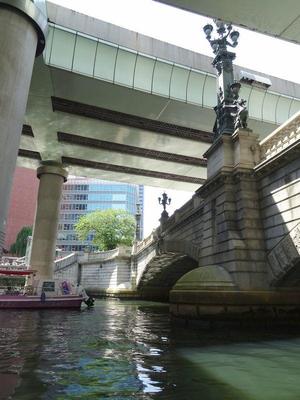
I'm going to go upstream.
It is a privilege unique to a ship to be able to take a picture of Nihonbashi at the angle looking up and pass under Nihonbashi.
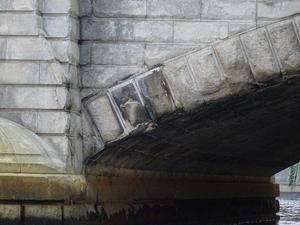
By the way...This blackened part seems to be the scars of the fire associated with the Great Kanto Earthquake.
Nihonbashi today has been active for more than 100 years since it was replaced in the Meiji era, but it shows the length of its history.
By the way, pass through Nihonbashi and pass through Nishikawabashi Bridge and Tokiwa Bridge, you will see the bridge under construction.
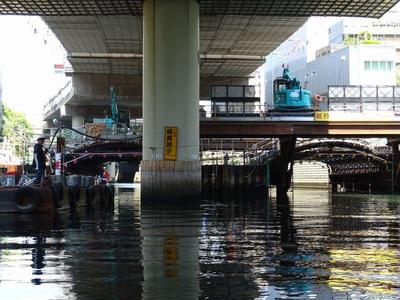
This is Jobanbashi, the oldest stone bridge in Tokyo, which was rebuilt in 1877.
It was damaged in Great East Japan Earthquake in 2011 and is currently undergoing restoration work.
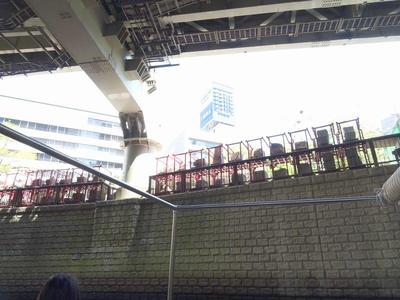
The stones used for bridges are kept at different locations along the Nihonbashi River after numbering them on each one. It is said that it will be restructured in the future.
After Joban Bridge, pass through Shin-Tokiwa Bridge and JR lines, and the section where the Nihonbashi River flows through Chuo-ku ends.
After this, the boat goes up the Nihonbashi River, reaches the junction with the Kanda River, and then descends the Kanda River.
The section where the Kanda River borders Chuo-ku is only about 500m downstream from "Saemon Bridge" to join the Sumida River ...
This section is very nice.![]()
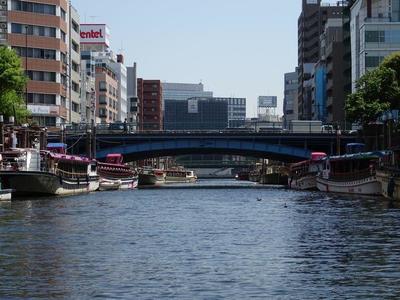
In the middle is Asakusabashi, the left is Taito Ward, and the right side of the photo is Chuo-ku, but in this area there are houseboat lodgings on both banks of the river, and you can see the scenery of houseboats lined up. I can do it.
If you pass through Yanagibashi while looking at the houseboat, you will go to the Sumida River next.
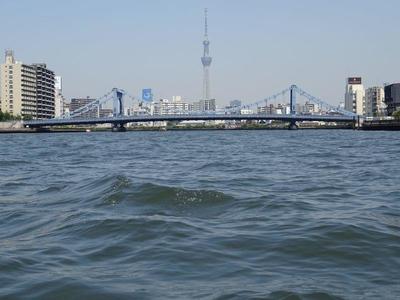
When you go out to the wide Sumida River, you can open your view at once.
On the way, you can also see the scenery of the Tokyo Sky Tree coming out of the middle of Kiyosu Bridge (a nationally designated important cultural property).
By the way, do you know the magnitude of the waves in front of Kiyosu Bridge?
Compared to the Nihonbashi River and Kanda River, the Sumida River has a larger wave, and it is quite thrilling when facing a small boat.![]()
We go down the Sumida River while thinking that![]() the boating of the Sumida River, which was popular during the Edo period, was quite difficult.
the boating of the Sumida River, which was popular during the Edo period, was quite difficult.
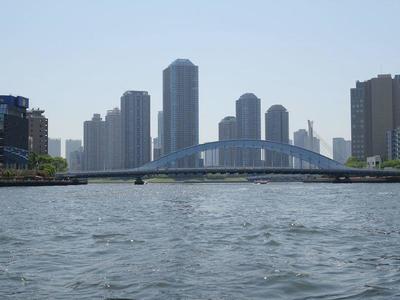
These are "Eitai Bridge" (nationally designated important cultural property) and "Okawabata River City 21" in Tsukuda. The competition between modern bridges and modern cityscapes is a highlight.
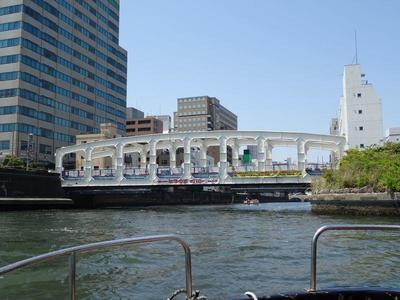
In front of Eitai Bridge, the boat turns right and enters the Nihonbashi River again. The first time you enter the Nihonbashi River is Toyomi Bridge (Kumin Tangible Cultural Property), a valuable "Fee Ren Dale-style bridge" in the shape of a ladder defeat.
As you go up the Nihonbashi River, the Metropolitan Expressway joins overhead again and approaches the center of the Nihonbashi area.
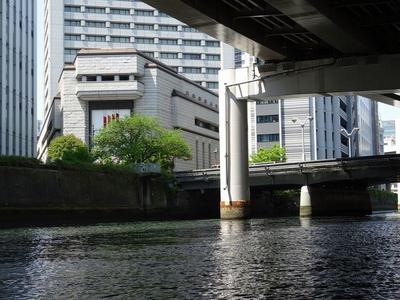
This is the famous Tokyo Stock Exchange Main Building. It is said that there is a design idea to take in the luck coming up from the Nihonbashi River and expand it in the form of a wide building, but if you look from the top of the river, you can feel it well.
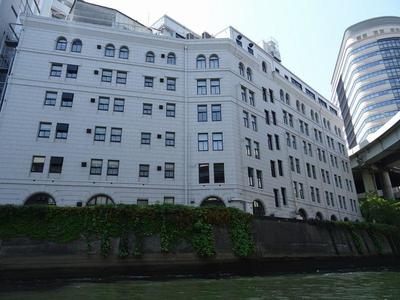
This is the Nisshokan (built in 1928) built in the place where Eiichi Shibusawa's mansion was once located. When viewed from the top of the river, the windows in the staircase are staircases, so you can enjoy a different design than seen from the road side.
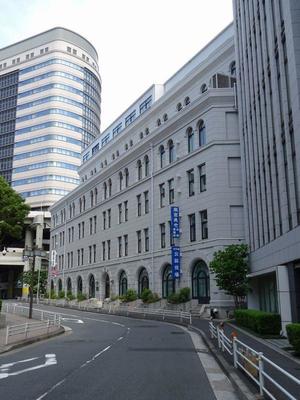
(Reference: Nisshokan seen from the road side)
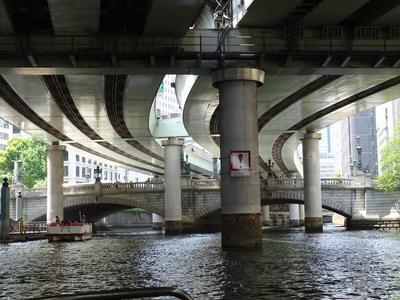
That's why I came back to Nihonbashi after a cruise about an hour.
The day was a summer day![]() with temperatures exceeding 25 degrees Celsius in April, but the river was cool and very comfortable.
with temperatures exceeding 25 degrees Celsius in April, but the river was cool and very comfortable.
It is also convinced that boating on the Sumida River was a summer tradition during the Edo period.
In Chuo-ku, various businesses operate cruises on various routes.
In addition to the Nihonbashi River, there seems to be a ship that goes around Tsukuda, Tsukishima, and Kachidoki downstream of the Sumida River, which could not be introduced this time.
In the coming season, it is recommended to enjoy the scenery of Chuo-ku from a different perspective while cooling down!

